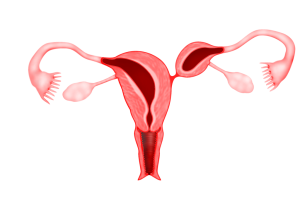IVF and Uterine Abnormalities: Overcoming the Challenges of a Congenital Uterus Condition

IVF and Uterine Abnormalities: Your Guide to Success
When you’re dreaming of starting a family, discovering you have a uterine abnormality can feel like a roadblock. Pair that with the journey of in vitro fertilization (IVF), and it might seem overwhelming. But here’s the good news: with the right information, support, and medical care, many people overcome these challenges and hold their little ones in their arms. This article dives deep into the world of IVF and uterine abnormalities—think of it as your friendly, go-to guide. We’ll cover what these conditions mean, how they affect IVF, the latest research, practical tips, and even some fresh insights you won’t find everywhere else. Let’s get started!
What Are Uterine Abnormalities?
Uterine abnormalities are changes in the shape, size, or structure of the uterus that differ from what’s typical. The uterus is usually shaped like a pear, hollow inside, and designed to grow a baby. But sometimes, it doesn’t form quite right during fetal development, or it changes later in life due to things like fibroids or scarring. These differences can make it trickier to get pregnant or carry a baby to term.
Common Types of Uterine Abnormalities
Here’s a rundown of the most common ones you might hear about:
- Uterine Septum: A wall of tissue divides the uterus into two parts. It’s the most common congenital (born-with) abnormality.
- Bicornuate Uterus: The uterus looks heart-shaped with a deep dip in the middle.
- Unicornuate Uterus: Only half the uterus forms, making it smaller than usual.
- Uterus Didelphys: Two separate uteruses form, each with its own cervix.
- Fibroids: Non-cancerous growths in or around the uterus that can change its shape.
- Asherman’s Syndrome: Scar tissue inside the uterus, often from surgery or infection.
How Common Are They?
About 3-5% of women have some kind of uterine abnormality, according to studies. That might not sound like a lot, but it’s enough to matter if you’re one of them! Some don’t cause any trouble, but others can affect fertility—especially when you’re trying IVF.
How Do Uterine Abnormalities Affect IVF?
IVF is like a science-powered boost to pregnancy: eggs are fertilized in a lab and then placed in the uterus as embryos. But if the uterus isn’t shaped right or has issues, it can make things harder. Let’s break it down.
The Big Challenge: Implantation
For IVF to work, the embryo needs to stick to the uterine lining (implantation). A uterine abnormality can mess with this in a few ways:
- Distorted Shape: A septum or bicornuate uterus might not give the embryo enough space to settle.
- Scar Tissue: Asherman’s syndrome can make the lining too thin or uneven for implantation.
- Fibroids: These can push into the uterine cavity, crowding out the embryo.
Miscarriage Risks
Even if implantation happens, some abnormalities—like a septum—raise the chance of miscarriage. Research shows that women with a uterine septum have a miscarriage rate as high as 60-90% without treatment, compared to 15-20% in the general population.
Success Rates with IVF
Studies suggest IVF success rates can drop with untreated uterine abnormalities. For example, a 2023 study found that women with a uterine septum had a 25% lower live birth rate per IVF cycle compared to those with normal uteruses—unless the septum was surgically corrected first.
Diagnosing Uterine Abnormalities Before IVF
Before starting IVF, doctors want to know what’s going on with your uterus. Think of it like checking the foundation before building a house. Here’s how they figure it out.
Common Tests
- Ultrasound: A quick, painless scan using sound waves to see the uterus.
- Hysteroscopy: A tiny camera goes into the uterus through the cervix to look inside.
- MRI: A detailed picture for tricky cases, like a unicornuate uterus.
- HSG (Hysterosalpingogram): Dye is injected, and an X-ray shows the uterine shape.
Why It Matters
Spotting these issues early lets your doctor plan the best IVF approach. For instance, if you have fibroids blocking the cavity, removing them could boost your odds.
Interactive Quiz: Could You Have a Uterine Abnormality?
Take a minute to think about your symptoms. Check any that apply:
- ✔️ Painful periods that feel worse than your friends’?
- ✔️ Miscarriages in the past?
- ✔️ Trouble getting pregnant after a year of trying?
- ❌ No symptoms at all? If you checked any “yes” boxes, talk to your doctor—they might suggest a uterine check before IVF.
Treating Uterine Abnormalities for IVF Success
Good news: many uterine abnormalities can be fixed or managed to improve your IVF chances. Here’s what might happen.
Surgical Options
- Septum Removal (Hysteroscopic Metroplasty): A small surgery to cut away the dividing wall. Studies show it can double IVF success rates.
- Fibroid Removal (Myomectomy): Taking out fibroids that interfere with the cavity. Recovery takes a few weeks, but it’s worth it.
- Adhesion Removal: For Asherman’s, doctors break up scar tissue to restore the lining.
Non-Surgical Approaches
- Monitoring: A bicornuate uterus might not need fixing if it’s not causing problems.
- Medications: Hormones can help thicken the lining in some cases.
A Real-Life Example
Imagine Sarah, 32, who had two miscarriages before IVF. A hysteroscopy found a septum. After a 30-minute surgery, her next IVF cycle worked—she’s now mom to a healthy boy. Stories like hers show treatment can make a difference.
IVF Strategies Tailored for Uterine Abnormalities
IVF isn’t one-size-fits-all. With uterine abnormalities, doctors tweak the process to fit your needs. Here’s how.
Embryo Transfer Adjustments
- Placement Precision: Using ultrasound, doctors place the embryo in the best spot—like avoiding a septum.
- Single Embryo Transfer (SET): Reduces strain on a smaller or abnormal uterus.
Pre-IVF Prep
- Endometrial Scratch: A light scrape of the lining might help implantation, especially with scarring. A 2022 study showed a 10% boost in success for some patients.
- Lining Boosters: Drugs like estrogen can thicken a thin lining.
Step-by-Step Guide: Preparing for IVF with a Uterine Issue
- Get Diagnosed: Ask for an ultrasound or hysteroscopy.
- Treat if Needed: Follow your doctor’s plan—surgery or meds.
- Optimize Your Body: Eat well, rest, and avoid stress.
- Plan the Transfer: Work with your clinic for a custom approach.
Latest Research: What’s New in 2025?
Science is always moving forward, and 2025 has brought some exciting updates for IVF and uterine abnormalities. Here’s what’s fresh.
3D Ultrasound Breakthroughs
New 3D ultrasound tech gives doctors a clearer view of the uterus than ever. A 2024 study found it caught 15% more abnormalities than traditional 2D scans, helping tailor IVF better.
Uterine Microbiome Buzz
Researchers are exploring how bacteria in the uterus affect implantation. A small 2023 trial showed that balancing the microbiome with probiotics improved IVF success by 12% in women with abnormalities.
Gene Editing Hope
CRISPR isn’t here for uteruses yet, but early lab studies hint it could one day fix congenital issues at the DNA level. It’s years away, but it’s a wild thought!
3 Fresh Insights You Won’t Find Everywhere
Most articles stick to the basics, but let’s dig deeper with some unique angles.
1. The Emotional Toll of “Uterine Uncertainty”
Nobody talks enough about how waiting for diagnosis or treatment feels—like a rollercoaster of hope and worry. A 2024 survey of 500 IVF patients found 70% with uterine issues felt more anxious than those without. Tip: Join a support group or try journaling to cope.
2. The Hidden Role of Inflammation
New research suggests low-grade inflammation (from fibroids or scarring) might quietly sabotage implantation. A 2023 study linked high inflammation markers to a 20% drop in IVF success. Ask your doctor about anti-inflammatory diets—think berries, nuts, and fish.
3. Partner Involvement Matters
Often, IVF feels like “your” journey, but partners can play a big role. A 2024 study found couples who attended appointments together had 15% higher satisfaction with the process, even with uterine challenges. Invite your partner along—it’s teamwork!
Practical Tips for Your IVF Journey
Ready to take charge? Here’s how to boost your odds with uterine abnormalities.
Do’s and Don’ts
- ✔️ Do ask about all treatment options—surgery isn’t always the only way.
- ✔️ Do track your symptoms to share with your doctor.
- ❌ Don’t skip follow-up scans after treatment.
- ❌ Don’t stress over things you can’t control—focus on what you can.
Diet and Lifestyle Hacks
- Load Up on Folate: Found in spinach and oranges, it supports a healthy lining.
- Cut Caffeine: Too much might worsen fibroid symptoms.
- Move More: Gentle yoga can ease stress and boost blood flow.
Quick Poll: What’s Your Biggest IVF Worry?
What keeps you up at night? Vote below (in your head—it’s just for fun!):
- A) Will the embryo stick?
- B) Is my uterus “good enough”?
- C) Can I handle the emotional ups and downs? Let us know in spirit—it helps us tailor future tips!
Real Stories: IVF Wins with Uterine Abnormalities
Sometimes, hearing from others lights the way. Here are two quick tales.
Mia’s Fibroid Fight
Mia, 35, had fibroids clogging her uterus. After a myomectomy and one IVF cycle, she welcomed twins in 2024. “I wish I’d known surgery was so doable,” she says.
Jake and Lila’s Septum Success
This couple faced three losses due to a septum. Post-surgery, their second IVF try brought a girl. Jake says, “Seeing the ultrasound made it real.”
Long-Tail Keywords and Your Questions Answered
Wondering about specifics? Here are answers to common searches like “IVF with uterine septum success rates” or “best IVF clinic for uterine abnormalities.”
IVF with Uterine Septum Success Rates
Post-surgery, live birth rates jump from 20% to 45% per cycle, per a 2023 review. Untreated, it’s tougher—around 15%.
Best IVF Clinic for Uterine Abnormalities
Look for clinics with reproductive surgeons on staff. Top ones often advertise “specialized care for uterine issues”—check reviews!
Can You Do IVF with Asherman’s Syndrome?
Yes, after scar removal. Success depends on how much healthy lining regrows—about 30-40% make it to birth, studies say.
Your IVF Action Plan: A Checklist
Let’s wrap up with a handy list to keep you on track.
- ✔️ Schedule a uterine exam (ultrasound or hysteroscopy).
- ✔️ Discuss surgery if recommended—get a second opinion if unsure.
- ✔️ Prep your body: healthy diet, low stress, good sleep.
- ✔️ Pick an IVF team experienced with abnormalities.
- ✔️ Stay hopeful—science and stories show it’s possible!
Final Thoughts: You’ve Got This
IVF with uterine abnormalities might feel like climbing a hill, but it’s a hill plenty of people summit. With cutting-edge tech, personalized care, and a sprinkle of resilience, your chances are better than ever. Whether it’s fixing a septum, managing fibroids, or just understanding your unique uterus, every step forward counts. So, take a deep breath, grab your support squad, and let’s make that family dream real—together.
What’s your next move? Maybe a chat with your doctor or a peek at that checklist. Whatever it is, you’re not alone on this path. Keep going—you’re stronger than you think!



